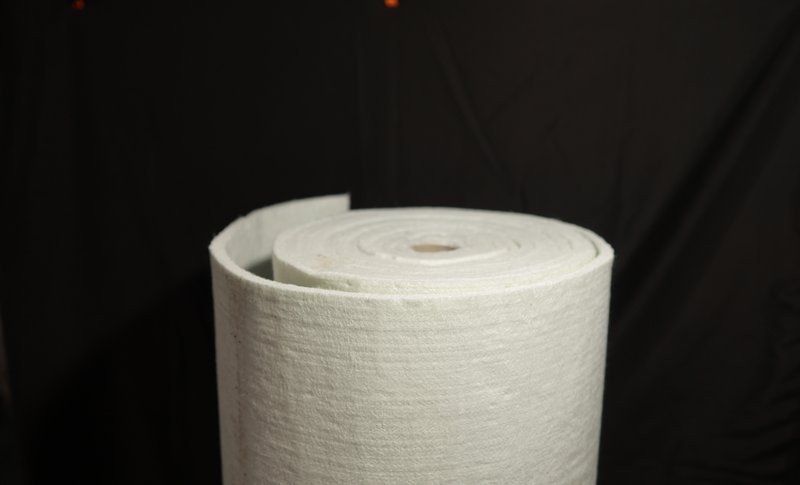Composite nano-aerogel blanket and traditional insulation materials: innovative insulation solutions for industry and construction
As global energy consumption continues to grow, nano-aerogel blankets—recognized as the insulation material with the lowest known thermal conductivity—are transforming the insulation industry. This article explores innovative composite technologies that combine aerogels with traditional materials such as rock wool and aluminum silicate, revealing key breakthroughs in performance enhancement, ease of construction, and bonding. Experimental data demonstrates the synergistic effect of thermal resistance and lightweight design. High-temperature inorganic adhesives are crucial for long-term structural stability. From industrial applications to green buildings and new energy vehicles, aerogel composites are building a new generation of lightweight, efficient, and sustainable insulation solutions.

Ⅰ. Nano-aerogel Blanket: Redefining "High-Efficiency Thermal Insulation"
Nano-aerogel blankets are porous, three-dimensional materials composed of nanoscale particles. Their extremely low density (only three times that of air) and thermal conductivity as low as 0.013-0.025 W/m·K make them 2-8 times more efficient than rock wool in insulation. A porosity exceeding 90% creates nano-scale air pockets that effectively block heat transfer. Compared to traditional materials, they require only one-third to one-fifth the thickness to achieve the same insulation effect. They are ideal for confined industrial spaces, curved ducts, and architectural applications. However, their cost (5-8 times higher) limits their use alone. Composite solutions address this issue by using aerogel as the insulating core and surrounding it with rock wool or aluminum silicate to distribute the cost and provide reinforcement, resulting in a cost-effective structure.
II. Heterogeneous Composites: Breaking the Limits of Traditional Insulation
1. Material Synergy: 1 + 1 > 2
Traditional insulation materials (such as rock wool) suffer from moisture absorption and loose structure; aluminum silicate, on the other hand, is heat-resistant yet rigid. A composite of 5 mm aerogel and 20 mm rock wool can:
Reduce insulation thickness by 40%
Reduce heat loss by 35%
Reduce pipe load and increase installation flexibility
This design provides high-performance insulation for pipes, ducts, and industrial plants with limited space.
2. Experimental Verification: Measurable Heat Gain
A 30 mm composite with a 1:4 ratio of aerogel to aluminum silicate exhibits a thermal conductivity of 0.029 W/m·K, 47% lower than pure aluminum silicate.
In a 600°C flame test, the backside took twice as long to reach 100°C compared to rock wool, demonstrating excellent thermal delay and structural stability under extreme heat.
This demonstrates the effectiveness of the "aerogel inside, traditional outside" strategy—balancing thinness with high heat resistance.
III. Adhesive Selection: A Decisive Factor in Long-Term Reliability
The porous nanostructure of aerogels poses challenges to adhesive performance. Three bonding options were analyzed:
One-component organic adhesive: Easy to apply, but carbonizes at 300°C, losing 60% of its strength, making it suitable only for short-term repairs.
Two-component epoxy resin: Strong initial adhesion, but releases gas during decomposition, leading to bubble formation and a 20% increase in thermal conductivity at 500°C.
Inorganic high-temperature adhesive (aluminosilicate-based):
Forms a chemical bond with the aerogel surface
Can withstand temperatures up to 250°C for a long time
Maintains a bond strength of 1.2 MPa
Only increases thermal conductivity by 1.5%
The mineral composition ensures low thermal interference and structural flexibility, accommodating thermal expansion while preventing delamination and cracking. In refinery pipelines, this composite system bonded with inorganic adhesives has achieved a service life of over 10 years, three times that of conventional systems.
IV. Applications: From Heavy Industry to Smart Living
1. Industrial Energy Saving and Safety Improvement
Petrochemical Pipelines: Surface temperatures are reduced from 200°C to below 50°C, preventing burns.
LNG Tanks: Aerogel layers block cold transfer, preventing condensation and safety issues.
Results: Equipment heat loss is reduced by 40%, energy savings are 15%, and the payback period is 2-3 years.
2. Civilian Integration: Green Buildings and Electric Vehicles
Architecture: "Aerogel + Glass Wool" panels, with a thickness of 30 mm, achieve the same insulation as a 100 mm brick wall, meeting Passive House standards.
Electric Vehicle Battery Packs: Aerogel composites can delay thermal runaway and reduce vehicle weight, thereby improving range and safety. China's new energy vehicles are widely using aerogel blankets to protect their batteries.
This technology is transforming aerogel from an "industrial elite material" into a mainstream safety and energy-saving guardian.
V. Future Outlook: How will aerogel be integrated into everyday life? With costs declining by 15% annually, future applications include:
Home insulation: Aerogel wallpaper enables ultra-thin wall upgrades without the need for structural engineering.
Cold chain: Aerogel boxes can provide room-temperature vaccine transport for telemedicine.
Outdoor gear: Aerogel clothing offers single-layer warmth at -30°C, revolutionizing winter clothing design.
This "guardian of nanotechnology" is quietly weaving a double safety net—from energy-intensive industries to urban residences—to achieve a more resilient and sustainable lifestyle.
Conclusion
The composite technology of nano-aerogel blankets with traditional materials offers an ideal combination of performance, cost, and practicality. By layering a high-performance aerogel blanket core with cost-effective structural insulation and bonding them with a durable inorganic adhesive, this technology resolves the long-standing conflict between thermal efficiency and usability. Beyond factories and pipelines, aerogel is also finding its way into homes, vehicles, and smart infrastructure, driving a new wave of sustainable innovation. Its future lies not only in extreme environments but also in becoming an integral part of everyday life.
LATEST NEWS
Comprehensive Overview of Polvere di Aerogel Product Lines for Industrial Buyers
2025-12-06
Exploring Aerogel Home Insulation as a Sustainable Choice for Modern Buildings
2025-12-06
Understanding Aerogel Home Insulation for Enhanced Fireproofing and Energy Saving
2025-12-05
Selecting the Right Polvere di Aerogel for Construction and Industrial Needs
2025-12-05
Reducing Energy Costs with Aerogel Home Insulation Technologies
2025-12-04
